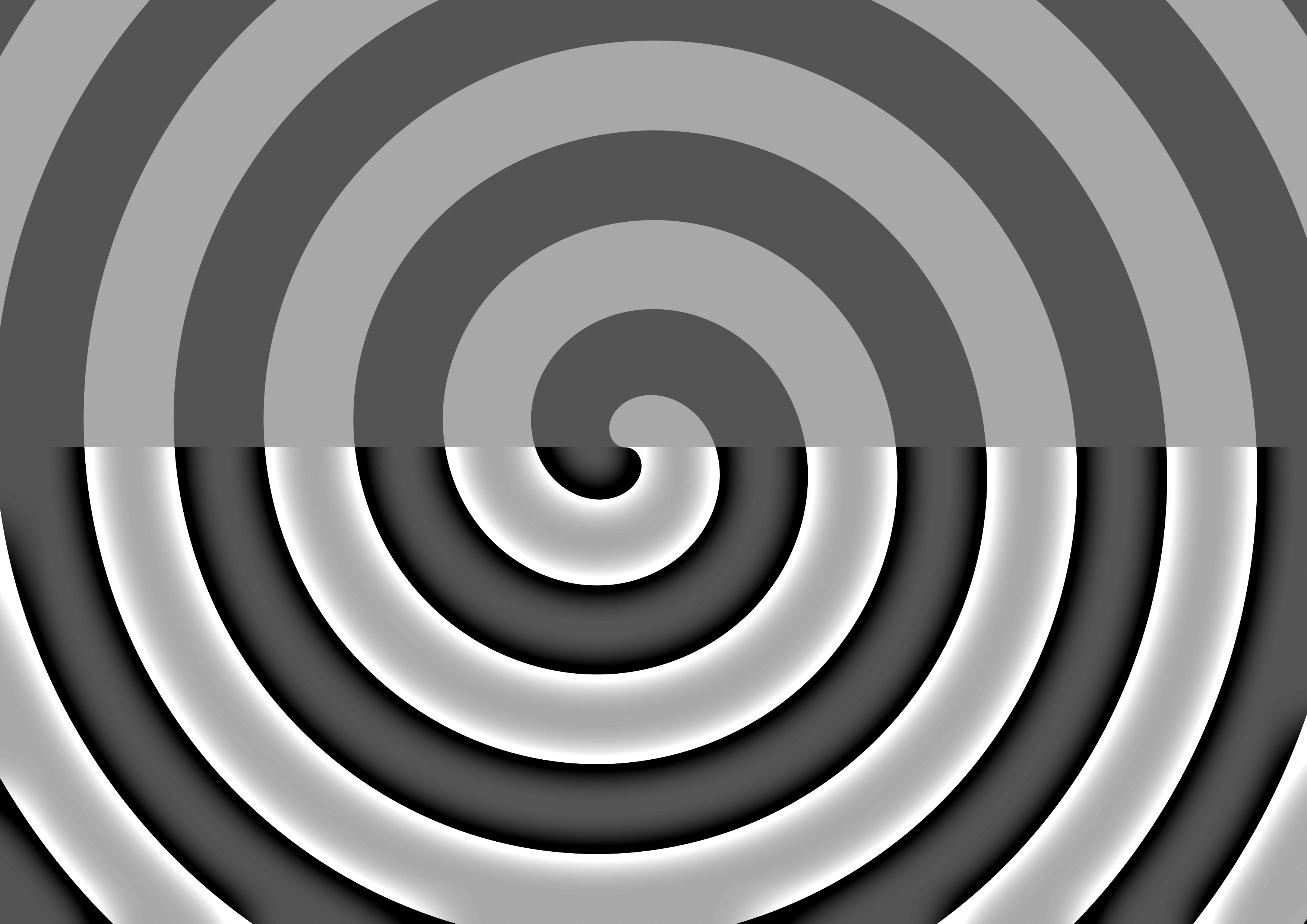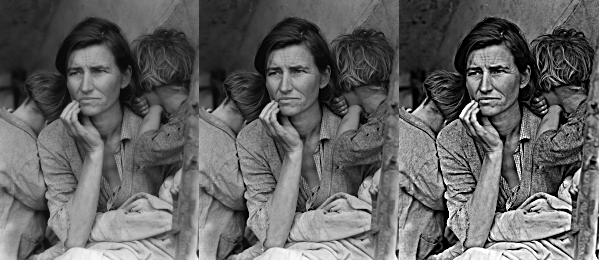Acutance on:
[Wikipedia]
[Google]
[Amazon]

 In
In


Tutorials: Sharpness
at Cambridge in Colour
Lens Sharpness: The Never-Ending Quest
a
The Luminous Landscape
Image processing Science of photography
 In
In photography
Photography is the art, application, and practice of creating durable images by recording light, either electronically by means of an image sensor, or chemically by means of a light-sensitive material such as photographic film. It is employe ...
, acutance describes a subjective perception of sharpness that is related to the edge contrast of an image. Acutance is related to the amplitude of the derivative
In mathematics, the derivative of a function of a real variable measures the sensitivity to change of the function value (output value) with respect to a change in its argument (input value). Derivatives are a fundamental tool of calculus. ...
of brightness
Brightness is an attribute of visual perception in which a source appears to be radiating or reflecting light. In other words, brightness is the perception elicited by the luminance of a visual target. The perception is not linear to luminan ...
with respect to space. Due to the nature of the human visual system, an image with higher acutance appears sharper even though an increase in acutance does not increase real resolution.
Historically, acutance was enhanced chemically during development of a negative (high acutance developers), or by optical means in printing (unsharp masking
Unsharp masking (USM) is an image sharpening technique, first implemented in darkroom photography, but now commonly used in digital image processing software. Its name derives from the fact that the technique uses a blurred, or "unsharp", negat ...
). In digital photography
Digital photography uses cameras containing arrays of electronic photodetectors interfaced to an analog-to-digital converter (ADC) to produce images focused by a lens, as opposed to an exposure on photographic film. The digitized image ...
, onboard camera software and image postprocessing tools such as Photoshop
Adobe Photoshop is a raster graphics editor developed and published by Adobe Inc. for Windows and macOS. It was originally created in 1988 by Thomas and John Knoll. Since then, the software has become the industry standard not only in raster ...
or GIMP offer various sharpening facilities, the most widely used of which is known as "unsharp mask" because the algorithm is derived from the eponymous analog processing method.
In the example image, two light gray lines were drawn on a gray background. As the transition is instantaneous, the line is as sharp as can be represented at this resolution. Acutance in the left line was artificially increased by adding a one-pixel-wide darker border on the outside of the line and a one-pixel-wide brighter border on the inside of the line. The actual sharpness of the image is unchanged, but the apparent sharpness is increased because of the greater acutance.
Artificially increased acutance has drawbacks. In this somewhat overdone example most viewers will also be able to see the borders separately from the line, which create two halos around the line, one dark and one shimmering bright.
Tools
Several image processing techniques, such asunsharp masking
Unsharp masking (USM) is an image sharpening technique, first implemented in darkroom photography, but now commonly used in digital image processing software. Its name derives from the fact that the technique uses a blurred, or "unsharp", negat ...
, can increase the acutance in real images.

Resampling

Low-pass filter
A low-pass filter is a filter that passes signals with a frequency lower than a selected cutoff frequency and attenuates signals with frequencies higher than the cutoff frequency. The exact frequency response of the filter depends on the filt ...
ing and resampling often cause overshoot, which increases acutance, but can also reduce absolute gradient, which reduces acutance. Filtering and resampling can also cause clipping
Clipping may refer to:
Words
* Clipping (morphology), the formation of a new word by shortening it, e.g. "ad" from "advertisement"
* Clipping (phonetics), shortening the articulation of a speech sound, usually a vowel
* Clipping (publications) ...
and ringing artifacts. An example is bicubic interpolation, widely used in image processing for resizing images.
Definition
One definition of acutance is determined by imaging a sharp "knife-edge", producing an S-shaped distribution over a width W between maximum density D1 and minimum density D2 – steeper transitions yield higher acutance. Summing the slope Gn of the curve at N points within W gives the acutance value A, More generally, the acutance at a point in an image is the gradient of the density (or intensity) at that point, a vector quantity: Thus the acutance of an image is a vector field.Sharpness
Perceived sharpness is a combination of both resolution and acutance: it is thus a combination of the captured resolution, which cannot be changed in processing, and of acutance, which can be so changed. Properly, perceived sharpness is the steepness of transitions (slope), which is change in output value divided by change in position – hence it is maximized for large changes in output value (as in sharpening filters) and small changes in position (high resolution). Coarse grain ornoise
Noise is unwanted sound considered unpleasant, loud or disruptive to hearing. From a physics standpoint, there is no distinction between noise and desired sound, as both are vibrations through a medium, such as air or water. The difference aris ...
can, like sharpening filters, increase acutance, hence increasing the perception of sharpness, even though they degrade the signal-to-noise ratio.
The term ' is sometimes heard (by analogy with critical focus) for "obtaining maximal optical resolution", as limited by the sensor/ film and lens
A lens is a transmissive optical device which focuses or disperses a light beam by means of refraction. A simple lens consists of a single piece of transparent material, while a compound lens consists of several simple lenses (''elements ...
, and in practice means minimizing camera shake
Image stabilization (IS) is a family of techniques that reduce blurring associated with the motion of a camera or other imaging device during exposure.
Generally, it compensates for pan and tilt (angular movement, equivalent to yaw and pit ...
– using a tripod
A tripod is a portable three-legged frame or stand, used as a platform for supporting the weight and maintaining the stability of some other object. The three-legged (triangular stance) design provides good stability against gravitational loads ...
or alternative support, mirror lock-up
Mirror lock-up (often abbreviated to MLU) is a feature employed in many Single Lens Reflex (SLR) cameras. It allows the operator to reduce vibration-induced motion blur during exposure. It also allows the mounting of lenses which extend into th ...
, a cable release
The Bulb setting (abbreviated B) on camera shutters is a momentary-action mode that holds shutters open for as long as a photographer depresses the shutter-release button. The Bulb setting is distinct from shutter's Time (T) setting, which is a ...
or timer, image stabilizing lenses – and optimal aperture for the lens and scene, usually 2–3 stops down from wide-open (more for deeper scenes: balances off diffraction blur with defocus blur or lens limits at wide-open).
See also
* Contrast (vision) * Cornsweet illusion *Edge enhancement
Edge enhancement is an image processing filter that enhances the edge contrast of an image or video in an attempt to improve its acutance (apparent sharpness).
The filter works by identifying sharp edge boundaries in the image, such as the e ...
* Mach bands
* Ringing artifact
References
{{reflistFurther reading
* ''The Focal Encyclopedia of Photography'', Focal Press, 1956, Ed. Frederick PurvesExternal links
Tutorials: Sharpness
at Cambridge in Colour
Lens Sharpness: The Never-Ending Quest
a
The Luminous Landscape
Image processing Science of photography